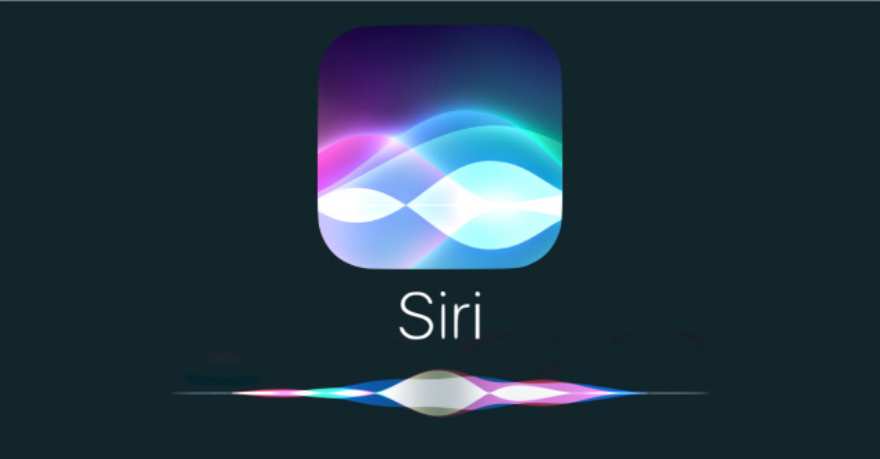Introduction: The AI Arms Race and Apple’s Silent Strategy
In the rapidly escalating AI arms race, tech giants are locked in a fierce battle for dominance. We’ve witnessed the public explosion of large language models (LLMs) like ChatGPT and Gemini, which have fundamentally altered user expectations for digital assistants. Amidst this frenzy, Apple, a company renowned for its polished user experiences, has been perceived as conspicuously quiet. Its digital assistant, Siri, once a revolutionary feature, has increasingly felt dated compared to its more conversational and capable rivals. However, behind the curtain of Cupertino’s famous secrecy, a monumental shift is underway. Apple is not just playing catch-up; it is meticulously architecting a generational leap for Siri, powered by advanced generative AI. This isn’t about launching a standalone chatbot. Instead, Apple is pursuing a far more ambitious goal: deeply integrating a smarter, more context-aware Siri into the very fabric of its operating systems. This article delves into the technical underpinnings of this strategy, exploring what the next generation of Siri could mean for the entire Apple ecosystem and why the company’s deliberate, privacy-centric approach may ultimately prove to be its greatest strength.
The Foundation of a Smarter Siri: Apple’s Internal AI Strategy
Apple’s approach to integrating generative AI is characteristically methodical. Rather than rushing a public-facing chatbot to market, the company is investing heavily in building and refining its foundational models internally. This strategy involves creating a powerful, proprietary LLM—often referred to within tech circles as “Apple GPT”—and rigorously testing it within the confines of its own corporate environment. This internal-first methodology serves several critical purposes that are central to the latest Siri news and future iOS updates news.
Cultivating a Polished and Integrated Experience
First and foremost, internal testing allows Apple to ensure the technology meets its famously high standards for quality and user experience before it ever reaches a consumer device. The goal is not just to make Siri more talkative, but to make it fundamentally more useful and reliable across every product. This impacts everything from the latest iPhone news, where Siri is a core feature, to emerging platforms discussed in Apple Vision Pro news, where voice interaction will be paramount. By using its own employees as the initial user base, Apple can gather invaluable data on real-world queries, identify weaknesses, and refine the AI’s conversational abilities in a controlled setting. This prevents the public “beta” feel that has plagued some initial AI rollouts from competitors, ensuring the final product is a seamless extension of the Apple experience.
A Unified Intelligence Across the Ecosystem
The vision extends far beyond a single device. A truly intelligent assistant must operate flawlessly across the entire Apple ecosystem news landscape. This means the upgraded Siri must understand context whether you’re speaking to your iPhone, your Apple Watch, a HomePod, or even your Apple TV. Imagine asking your HomePod mini news-worthy smart speaker to find a recipe, then having the ingredients automatically appear in a list on your iPhone when you arrive at the grocery store. This level of synergy requires deep integration that can only be perfected through extensive internal testing. This unified approach will also enhance accessories, with AirPods Pro news likely to feature more advanced Siri interactions for hands-free control, and even future Apple Pencil news pointing towards AI-assisted creative workflows on iPad.
Prioritizing Privacy from the Ground Up
Perhaps the most crucial aspect of this internal development is its alignment with Apple’s unwavering commitment to user privacy. Generative AI models are notoriously data-hungry. By developing its technology in-house, Apple maintains complete control over the data pipelines, allowing it to engineer privacy-preserving techniques from the very beginning. This focus on Apple privacy news and iOS security news is a key differentiator and will be a central theme in the eventual rollout. The challenge lies in balancing the power of cloud-based processing with the security of on-device computation, a technical hurdle Apple is uniquely positioned to tackle.
Deconstructing the Generative AI Upgrade: What a ‘New Siri’ Could Do

The transition from the current, command-based Siri to a generative AI-powered assistant represents a paradigm shift in human-computer interaction. This upgrade is not merely an incremental improvement; it’s a complete re-architecture of Siri’s core capabilities. Let’s break down the key technical advancements we can expect.
Conversational Fluency and Contextual Awareness
The most immediate change users will notice is Siri’s ability to engage in natural, multi-turn conversations. Current digital assistants often suffer from digital amnesia, treating each query as an isolated event. An LLM-powered Siri will be able to maintain context.
- Real-World Scenario: You could ask, “Siri, what are some good hiking trails near me?” After receiving a list, you could follow up with, “Which of those are dog-friendly and under 3 miles?” The new Siri would understand that “those” refers to the previously mentioned trails, a simple yet profound leap in usability. This capability will be transformative for hands-free devices, making recent Apple Watch news about its processing power even more relevant.
Deep App Integration and Multi-Step Automation
This is where a new Siri could truly outshine its competitors. Apple’s “walled garden” provides a unique advantage for deep, cross-app integration. The new Siri will likely leverage an advanced version of the Shortcuts framework to perform complex, multi-step tasks with a single voice command.
- Case Study: Workflow Automation: Imagine saying, “Siri, plan my trip to the beach.” This could trigger a complex workflow: Siri checks your calendar for a free day, pulls the weather forecast, finds directions to a nearby beach with good reviews, creates a “Beach Day” playlist in Apple Music, and adds a reminder to pack sunscreen to your Reminders app. This level of automation turns your device from a reactive tool into a proactive assistant, impacting everything from planning your day on an iPad to managing media on your Apple TV, a frequent topic in Apple TV news.
On-Device vs. Cloud Processing: The Privacy-Performance Hybrid
The core technical challenge is delivering this intelligence without compromising privacy. Apple’s solution will almost certainly be a hybrid model. Simpler queries and tasks that involve personal data (like searching your photos or messages) will be handled by a smaller, efficient language model running directly on the device’s silicon (the A-series and M-series chips). This keeps sensitive information secure and private. More complex, general knowledge queries that don’t involve personal data could be securely offloaded to Apple’s cloud servers for processing by a much larger, more powerful model. This hybrid approach is critical for maintaining user trust, a cornerstone of Apple’s privacy news. It also ensures that critical functions related to Apple health news, such as summarizing your activity trends from your Apple Watch, remain securely on-device.
The Ripple Effect: How a Revamped Siri Will Transform the Apple Ecosystem
The introduction of a truly intelligent, proactive Siri will have profound implications that ripple across Apple’s entire hardware and software lineup. It signals a future where voice becomes a primary, rather than a secondary, user interface, fundamentally changing how we interact with our technology.
Redefining the User Interface for a Post-Touch World
For years, the touchscreen has been the dominant input method. A generative AI-powered Siri could usher in an era of conversational computing. This is especially transformative for devices where a screen is small or non-existent.
- AirPods & Wearables: For users of AirPods, this is a game-changer. Imagine being able to manage complex email replies, triage notifications, and control smart home devices without ever touching your phone. This makes the latest AirPods Max news about on-board processing even more intriguing.
- Spatial Computing: In the context of spatial computing, as seen in the latest Apple Vision Pro news, a powerful voice assistant is not just a feature—it’s a necessity. Navigating complex 3D interfaces and performing tasks will be far more intuitive with natural language commands, potentially working in tandem with new input devices hinted at in speculative Vision Pro wand news or Apple Pencil Vision Pro news.
Unlocking New Potential in Existing Hardware

This AI upgrade will breathe new life into existing products. The HomePod news has often focused on sound quality, but a smarter Siri could finally make it the true smart home hub Apple envisioned. Your Apple TV could become a more powerful content discovery engine, moving beyond simple searches like “Show me action movies” to more complex queries like “Find a critically acclaimed sci-fi movie from the last five years that I haven’t seen yet.” Even older concepts get a new lens; while an iPod revival news headline is unlikely, the principles of intuitive content management pioneered by the iPod Classic news era could be reborn through AI-powered playlist curation. The focus on software intelligence is a far cry from the days of the iPod Nano news or iPod Shuffle news, which were defined by their physical simplicity.
A Catalyst for Developers and Accessories
A more capable Siri will unlock a new frontier for developers. Enhanced APIs could allow third-party apps to integrate on a much deeper level, enabling users to perform complex in-app actions with their voice. This could lead to a new wave of innovation in the Apple accessories news space, with third-party hardware designed to leverage Siri’s new capabilities. From smart home gadgets to creative tools like those discussed in iPad vision board news, the entire ecosystem will benefit from a more intelligent central nervous system.
The Cautious Innovator: Apple’s Strategy and What It Means for Users
Apple’s deliberate and measured approach to AI stands in stark contrast to the “move fast and break things” ethos of some of its competitors. This strategy has both advantages and potential drawbacks for consumers.
Pros: The ‘Walled Garden’ as a Fortress of Privacy and Cohesion
The primary advantage of Apple’s strategy is a deeply integrated, secure, and private user experience. By controlling the hardware, software, and the AI model itself, Apple can ensure a level of cohesion and security that is difficult for others to replicate. Users can be more confident that their personal data is not being used to train a global AI model without their explicit consent. This focus on iOS security news will be a major selling point and a core part of the eventual Apple TV marketing news and campaigns for all its products.
Cons: The Pace of Innovation and Potential Limitations
The main drawback is speed. The internal testing and perfectionist approach mean Apple is later to the generative AI party. Competitors who have had public-facing models for longer have gathered more data and iterated more quickly. Furthermore, Apple’s on-device focus may, at least initially, limit Siri’s capabilities compared to purely cloud-based assistants that can leverage virtually unlimited computing power. Users may find that for cutting-edge, general-knowledge queries, other assistants still have an edge.
Tips and Considerations for Users
When the new Siri arrives, users can maximize its potential by adopting new habits:
- Think in Workflows: Start thinking beyond single commands. Consider multi-step tasks you do regularly and experiment with phrasing them as a single request to Siri.
- Embrace Shortcuts: The Shortcuts app is likely to be the engine for Siri’s new powers. Familiarizing yourself with it now will pay dividends later, allowing you to build custom, complex voice commands.
- Review Privacy Settings: With any new AI feature, it’s wise to review your privacy settings. Understand what data is being processed on-device versus what might be sent to the cloud, and make choices you’re comfortable with.
Conclusion: The Dawn of a New Conversational Era for Apple
Apple’s journey to reinvent Siri is a marathon, not a sprint. The decision to develop and refine its generative AI technology internally, shielded from public scrutiny, is a classic Apple move. It prioritizes a polished, secure, and deeply integrated experience over the bragging rights of being first. The upcoming changes promise to be the most significant Siri news since the assistant’s debut, transforming it from a simple tool for setting timers and checking the weather into the intelligent, conversational core of the entire Apple ecosystem. While the wait may test the patience of users eager for the latest AI advancements, the potential payoff is enormous: a digital assistant that is not only powerful and proactive but also fundamentally private and trustworthy. This impending overhaul will redefine our relationship with our devices, making the entire Apple ecosystem more cohesive, intuitive, and genuinely helpful.











